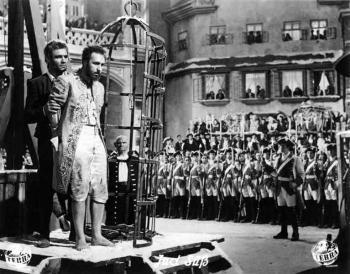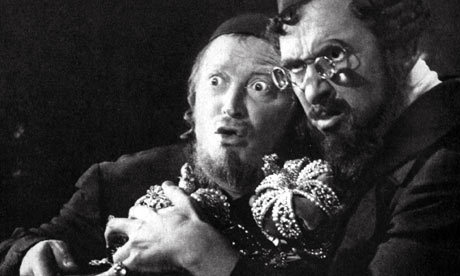#goebbels
250 Films Meme | 221 | Jud Süß (1940)
↳ Foreign 43/50
Note the second picture especially, illustrating the psychological effect of a narrative rape of “our women” by “the Other,” in terms of propaganda.
Post link
This was a theme in the popular narratives surrounding the agendas of both Nazi and United States regimes during World War Two. But I’ll get to that in a moment.
In former posts (hereandhere) I described how Freud, succeeded by Bernays, and others such as Goebbels, detailed and utilized the psychology behind such narrative uses of Self and Other to tug at and manipulate the anxieties of an audience.
Gender plays a very powerful role in narratives of Otherness. These are usually read from the male’s perspective, and so the women in such stories, if they are of the Other, they will be just outside the control of the man and so inviting of sexual and political subjugation (as shown in cases ranging from Black women in the war on welfare, to Mexican and Native American women in the wars for the west.)
Applying an understanding of the psychology behind these narratives Goebbels was able to enlist popular support for the final solution, pivotaly, with the film Jud Suss:
“Jud Suss involved the fictionalized account of an ancient criminal trial involving a sinister court official from medieval Wurtemburg. The facts of the matter were altered to become a simple "morality tale” of an innocent, indebted peasant boy (statistical and polling data ensured that the actor represented the most common male type in Germany at the time) in a medieval German town who is locked up by his creditor (money-lender). To save her love, a young voluptuous, blonde German girl (whom all men in the audience will want to sleep with–> as well as be jealous of anybody, that is unlike them, that will try to) pleads with the creditor, who then tries to seduce and ultimately, rape her.“
The American concentration of Japanese citizens in camps during the same time period was reconciled with popular opinion in the same kind of narratives and the same psychological mechanisms–only with an inverted focus. Here Japanese women were consistently presented with excessive themes of both femininity and Americanization, knitting, decorating, taking care of babies and all in hyper-Western fashions.
They were being made sexually accessible, and by that socially acceptable, in their assimilation.
This same process and feminine focus rendered the men an impotent non-party for consideration, but the psychological removal of the threat in this way proved just as consoling–similarly in popular media Japanese men were often displayed as incompetent buffoons.
I’m going to follow this post with a series of pictures illustrating the point.





